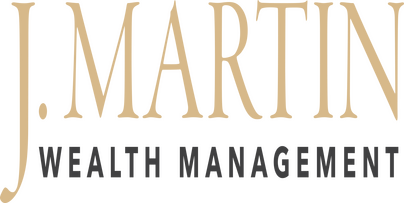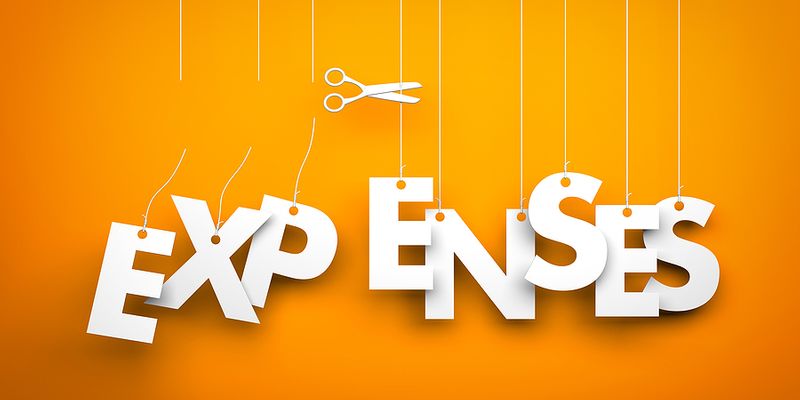Blog
Keep up to date with our news, tips & tricks, and latest information!
What to Do When One’s Plan for Retirement Goes Unfavorably
Jeff Martin, CRPC®
Retirement planning is a vital component of financial independence. Yet, despite diligent planning, one may find oneself in a situation where a retirement plan takes an unfavorable turn.
This situation could stem from a multitude of reasons, such as unexpected financial obligations, market fluctuations, or changes in income.
When such a situation arises, it's essential not to panic. Remember, there are options and strategies to help get one’s retirement plan back on track. Here are five tips for what to do when a retirement plan goes unfavorably.
1. Reassess financial goals. First and foremost, reassess financial goals and specific objectives. If those targets seem unattainable now, it's time to re-evaluate. Are there areas where expenses can be reduced or lifestyle expectations revised? Answering these questions and working with a financial professional can help create a more realistic retirement plan.
2. Activate an emergency fund. An emergency fund can serve as a financial lifesaver when one's retirement plan goes awry. An emergency fund is a stash of money set aside to cover the financial surprises life can bring. These unexpected expenses can derail any retirement savings plan if not prepared for. Therefore, establish an emergency fund for future emergencies.
moreHow Insurance Aids in Wealth Creation
Jeff Martin, CRPC®
Insurance can serve as a powerful tool in aiding wealth creation, as it protects against unexpected losses while also presenting opportunities for wealth accumulation.
Here's how insurance aids in wealth creation.
Mitigation of financial risks
Insurance is fundamentally a mechanism for transferring risk as it protects an individual's wealth by hedging against potential financial losses. For instance, health insurance covers the cost of medical expenses, thereby mitigating the risk of depleting one's savings due to a sudden illness. Property insurance protects against losses due to natural disasters or theft. Term life insurance provides financial stability to dependents in case of the policyholder's untimely death. By mitigating these risks, insurance helps protect the wealth an individual has already accumulated.
Cash accumulation
Cash value life insurance policies, such as universal life or whole life insurance, have a cash accumulation component. If needed, this cash can be borrowed against through a policy loan, offering a tax-efficient way to create wealth.
Annuities
Annuities are insurance products that provide a reliable source of retirement income throughout retirement, offering guaranteed payouts. However, annuities come with additional costs and may not be suitable for all investors. Investors are encouraged to work with a financial or insurance professional to understand how annuities work before purchasing one.
moreEight Actions for Developing a Family Wealth Philosophy
Jeff Martin, CRPC®
Creating a family wealth philosophy is a crucial step in safeguarding a family's financial future. It establishes a clear strategy and an understanding of how to manage, distribute, and preserve the family's wealth, ensuring it lasts for generations to come.
Here are some key actions for developing a family wealth philosophy.
1. Open communication - The first step in the process of formulating a family wealth philosophy is open and transparent communication among family members. It's crucial to involve all key family members in discussing the financial goals, expectations, and fears. This dialogue will help prevent future misunderstandings and disagreements over money matters.
2. Identifying values - In the foundation of every wealth philosophy lies the core values of the family. Therefore, it's critical to identify and outline these values early in the process. This identification could encompass principles related to philanthropy, entrepreneurship, or the importance of education.
3. Setting goals - Once the values are defined, it's time to establish clear, measurable financial goals. These goals can be short-term, such as saving for a vacation or a car, or long-term, like planning for retirement or working toward financial independence for future generations. A financial professional can help families establish goals aligned with their values.
moreStrategies to Cut Expenses When Money is Tight
Jeff Martin, CRPC®
In the current economic environment, many individuals and households are struggling to maintain their financial stability. As such, it is crucial to establish strategies to cut expenses when money is tight. There are practical approaches to reduce expenditure, save more, and enhance financial resilience, outlined below.
Create and stick to a budget—The first step to expense control is to prepare a budget and adhere to it. List all your income sources and expenditures and identify areas where you can reduce spending. By doing so, you maintain oversight of your financial state and can make proactive decisions to prevent unnecessary costs.
Cut back on nonessential expenses—Begin by trimming down non-critical expenses. These could be subscriptions to entertainment and fitness platforms, dining out, or even the daily coffee from your favorite café. Opt for economical alternatives such as home-based workouts, cooking home-made meals, and making your own coffee.
Shop innovatively—Using coupons, discounts, and cashback offers when shopping can help save money. Try to purchase items in bulk when they are on sale to save money. Additionally, reducing the frequency of shopping trips can also lead to significant savings on transport and impulsive buying.
moreThe “Big Beautiful Bill” Tax Law and Its Implications
Jeff Martin, CRPC®
The One Big Beautiful Bill Act of 2025 has a significant effect on federal taxes, credits, and deductions. Signed into law on July 4, 2025, the "Big Beautiful Bill" has implications for how it impacts personal and corporate taxes.
The changes it ushered in reshaped the tax landscape, affecting individuals and corporations differently. Here are some of the key changes investors and business owners need to know about this new tax law.
Personal taxes under Big Beautiful Bill
One of the key tenets of the Big Beautiful Bill was the effect it had on personal income tax brackets. Designed to provide tax relief, it aims to extend benefits across various income levels.
- Standard deduction increase- There is a significant increase in the standard deduction amount. This change means that fewer taxpayers need to itemize, simplifying the tax-filing process.
- Lower tax rates- The Big Beautiful Bill lowers marginal tax rates for most taxpayers.
- Child tax credits- The law expands child tax credits by an additional $200, to $2200, as a measure to provide a financial boost to families.
- Mortgage interest provision- The $750,000 principal limit for the home mortgage interest deduction is now permanent.
- Estate and gift taxes- Permanently increase the estate and lifetime gift tax exemption to an inflation-indexed $15 million for single filers, and $30 million for joint filers beginning in 2026.
- SALT taxes- Temporarily increase the cap on the itemized deduction for state and local taxes (SALT) to $40,000 for 2025, increasing the cap 1 percent each year through 2029. This provision phases out for taxpayers with incomes above $500,000, then reduces the cap to $10,000 thereafter.
Money Apps: The Keys to Driving Financial Wellness
Jeff Martin, CRPC®
In today's fast-paced world, working toward financial wellness requires a proactive approach. For many people, this means more than just saving or making monthly budgets. Thankfully, there is a wide range of money management apps designed to improve the way we manage our finances.
Money apps can serve as digital assistants, helping us make more informed money-related decisions, such as aiding investment choices, monitoring expenditures, and much more.
Why use money apps?
There are several reasons to use money apps for financial wellness:
· Budgeting - Creating and following a monthly budget can be difficult for some. Money apps can automate the process by connecting directly to one's bank account, categorizing expenses, and notifying users of where their money is going.
· Bill tracking - It can be challenging to keep track of all the bills due in a month. Money apps send alerts when bills are due, helping users avoid missing payments, which could negatively impact their credit.
· Savings goals - Money apps can help one set and work toward savings goals. Whether saving for a vacation or a home, these apps help track progress and motivate users to keep going.
more7 Ways Investors Can Prepare for a Recession
Jeff Martin, CRPC®
The world economies are cyclical, with periods of prosperity followed by downturns. One of the severe downturns is a recession, characterized by declining GDP, increasing unemployment, and falling asset prices.
As an investor, it is crucial to understand how to prepare for such economic events. Here are seven ways investors can work to protect their portfolios from the devastating effects of a recession.
#1- Diversify your portfolio
Diversification is a key strategy to mitigate risk. By distributing investments across various assets, sectors, and geographic regions, an investor can reduce exposure to any specific economic event or sector downturn. Diversification may include a mix of stocks, bonds, commodities, and real estate, depending on an investor’s risk tolerance and goals. The aim is to balance the portfolio with safer, lower-return investments and riskier, potentially higher-return investments.
#2- Maintain liquidity
Having access to cash during a recession is essential. It offers flexibility to take advantage of depreciated asset prices and can help provide a safety net if other income sources dissipate. Remember that during recessions, credit markets can tighten, making loans more challenging to acquire.
moreWealth and Legacy: How Individuals and Families Can Do Good for Others
Jeff Martin, CRPC®
The acquisition of wealth is a common aspiration for many individuals and families. However, wealth accumulation is not just about enriching oneself. There's another critical aspect often overlooked: the potential to use wealth to create a lasting, positive impact on society.
Here are some strategies individuals and families can implement to work toward using their wealth to leave a legacy that ‘does good’ for others.
Philanthropy
One of the most apparent ways wealth and legacy can intertwine is through philanthropy. Individuals or families can set up charitable trusts or foundations, contributing a part of their wealth to causes they are passionate about.
Whether it's funding education, contributing to medical research, or aiding in poverty eradication, philanthropy enables them to leave a legacy that translates into better communities and improved living conditions for those less fortunate.
Influencing policy and advocacy
Individuals and families also have unique opportunities to use their influence to bring about policy changes for the betterment of society. Using wealth and connections to advocate for policies that support social, economic, or environmental causes workstoward their legacy of impactful societal change.
moreA Guide to Roth IRA Conversions
Jeff Martin, CRPC®
In wealth management, one tax planning strategy is Roth IRA conversions, which may offer tax-free distributions in retirement. It’s essential to understand how Roth IRA conversions work, including their benefits, tax implications, and overall suitability, before making any decision regarding this strategy.
Understanding Roth IRA conversions
The primary reason investors initiate this strategy is to take advantage of the tax benefits of tax-free distributions in retirement. This strategy involves transferring assets from a tax-deferred vehicle, such as a Traditional IRA, SIMPLE, SEP IRA, or a 401(k) or other employer-sponsored retirement savings plan, to a Roth IRA.
Why would investors use this strategy?
There are several reasons why investors may implement this strategy:
· Roth IRAs offer tax-free growth and tax-free withdrawals during retirement.
· Unlike Traditional IRAs or 401(k)s, where distributions on the contribution and accumulation are taxed as ordinary income, Roth IRA withdrawals are usually tax-free.
· This strategy can be advantageous for investors who anticipate being in a higher tax bracket in retirement.
moreA Business Owner’s Guide to Mid-Year Planning
Jeff Martin, CRPC®
As the year approaches a close, it's an ideal time for business owners to evaluate their company’s financial health. Mid-year planning is critical and can help establish a confident foundation for the future. However, for many business owners, this planning can feel overwhelming. This guide aims to help manage the planning process using the following step-by-step approach.
Step #1- Review the past year's financial performance
Reflecting on this year's financial performance before the start of the 4th quarter can provide valuable insights. This reflection involves reviewing profit and loss statements, balance sheets, and cash flow statements. A comprehensive performance review can help identify trends and uncover the strengths, weaknesses, and opportunities for the rest of this year and the year ahead.
Step #2- Conduct Tax planning
Mid-year tax planning involves understanding current tax laws and determining suitable strategies to minimize tax liability. Reviewing expenditures and deductions, retirement plans, and potential tax credits can help work toward effective tax planning. Seeking guidance from a financial or tax professional can help business owners identify and take advantage of available deductions.
more









